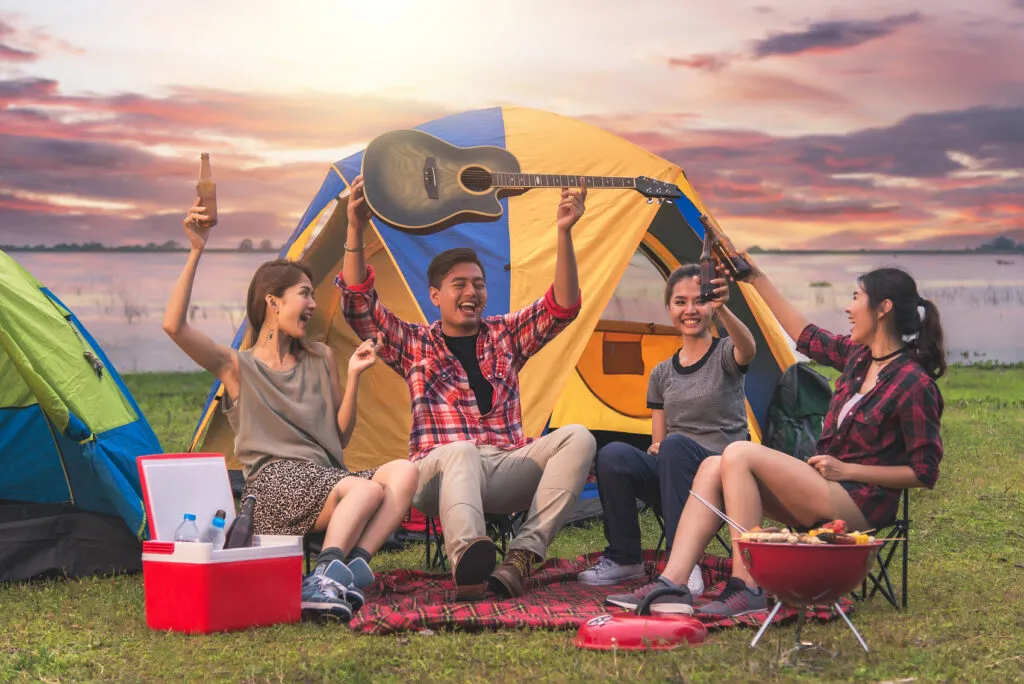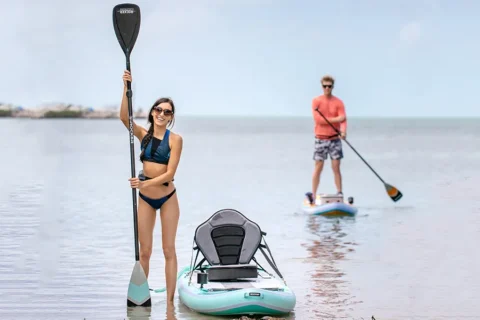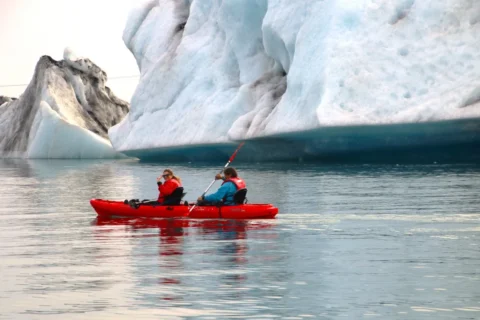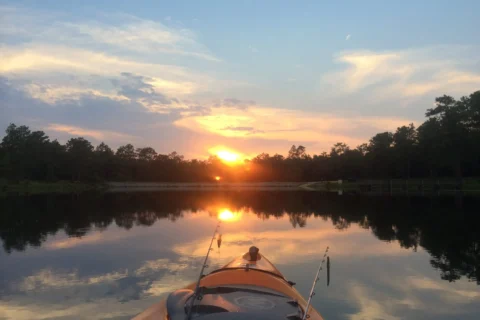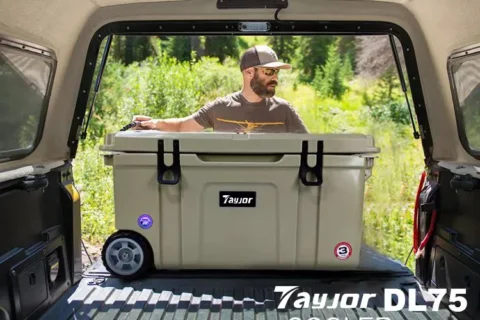Camping trips can be a lot of fun. Whether you’re planning a weekend getaway or a week-long adventure, staying organized and prepared is key. One essential item for any camping trip is an insulated cooler box. This handy piece of gear keeps your food and drinks fresh and cold, no matter where your journey takes you.
Why You Need an Insulated Cooler Box for Camping
First, let’s discuss why an insulated cooler box is necessary for camping. When you’re out in nature, access to fresh food can be limited. Having a cooler box helps you bring perishable items, ensuring you can enjoy fresh meals throughout your trip. Moreover, it keeps your beverages chilled, providing a refreshing drink after a long hike.
How an Insulated Cooler Box Works
An insulated cooler box is designed to maintain a low temperature inside. It has thick walls filled with insulating materials that prevent heat from entering. The lid is usually tight-sealing, further preventing warm air from getting in. Ice packs or ice cubes placed inside the cooler keep the temperature down, preserving your food and drinks.
Key Features to Look for in an Insulated Cooler Box for Camping
When choosing an insulated cooler box for camping, there are several key features to consider:
- Insulation Quality: The primary function of a cooler box is to keep things cold. Look for a cooler with thick, high-quality insulation. This feature ensures that your food and drinks stay cold for as long as possible.
- Size and Capacity: Consider how much storage space you need. Are you going on a solo trip, or will you be camping with family and friends? Cooler boxes come in various sizes, so choose one that fits your needs. A larger box can store more items, but it will also be heavier and bulkier.
- Durability: Your cooler box needs to withstand the rough conditions of camping. Look for a robust, sturdy design that can handle bumps, drops, and other outdoor challenges. Durable materials like heavy-duty plastic or rotomolded construction are great choices.
- Portability: Since you’ll need to carry your cooler box to your campsite, portability is important. Look for coolers with comfortable handles, wheels, or straps. Consider the weight of the cooler when it’s empty and when it’s full.
- Ease of Use: A good cooler box should be easy to open and close. It should also have a drain plug for easy cleaning. Some cooler boxes have additional features like cup holders, cutting boards, or compartments for better organization.
- Ice Retention: The ability of a cooler box to retain ice is crucial. Check how long the cooler can keep ice frozen. Some high-quality cooler boxes can retain ice for several days, making them ideal for extended trips.
Types of Insulated Cooler Boxes
There are several types of insulated cooler boxes available, each with its own advantages:
- Soft-Sided Coolers: These coolers are lightweight and easy to carry. They’re great for short trips or day hikes. Soft-sided coolers are usually made of fabric with a layer of insulation. They may not retain ice as long as hard-sided coolers, but they’re highly portable.
- Hard-Sided Coolers: These are the most common type of cooler box. They’re made of durable plastic and have thick insulation. Hard-sided coolers offer excellent ice retention and can withstand rough handling. They’re perfect for longer camping trips.
- Electric Coolers: Electric coolers plug into your vehicle’s power outlet. They keep your food and drinks cold without the need for ice. While convenient, they can be more expensive and require a power source.
- Wheeled Coolers: If you’re carrying a lot of items, a wheeled cooler can be a lifesaver. These coolers have built-in wheels and a handle for easy transportation. They’re typically hard-sided and offer good ice retention.
Tips for Maximizing Your Cooler Box’s Performance
To get the most out of your insulated cooler box for camping, follow these tips:
- Pre-Chill the Cooler: Before packing your cooler, chill it with ice or ice packs. This step helps lower the internal temperature, making it easier to keep your items cold.
- Use Block Ice: Block ice melts more slowly than ice cubes. Use a combination of block ice and ice packs to keep the temperature down. Place the block ice at the bottom and ice packs around your items.
- Pack Strategically: Organize your cooler for easy access. Place frequently used items on top. Keep raw meats in a separate, sealed container to prevent contamination. Fill any empty space with ice or ice packs to reduce air circulation, which can cause the ice to melt faster.
- Keep It Closed: Minimize the number of times you open your cooler. Each time you open it, warm air enters, and cold air escapes. Plan your meals and snacks so you can retrieve everything you need in one go.
- Store in the Shade: Keep your cooler in a shaded area to reduce heat exposure. Cover it with a blanket or towel for extra insulation.
- Drain Water: As ice melts, drain the water to maintain a cold temperature. However, be mindful of wildlife and the environment when disposing of the water.
Essential Uses for an Insulated Cooler Box
An insulated cooler box for camping has numerous uses beyond just keeping food and drinks cold:
- Food Storage: Safely store perishable foods like meats, dairy products, and fresh produce. Enjoy fresh meals throughout your camping trip without worrying about spoilage.
- Beverage Cooling: Keep your beverages chilled for a refreshing drink anytime. Whether it’s water, juice, or your favorite soda, a cold drink is always a treat.
- Fishing Trips: If you plan to fish, use your cooler to store your catch. It keeps the fish fresh until you’re ready to cook or transport them.
- Medication Storage: Some medications need to be kept cool. Your insulated cooler box can provide a safe and temperature-controlled environment for these items.
- Picnics and Day Trips: Use your cooler for day trips away from your campsite. Pack lunches, snacks, and drinks to enjoy a meal on the go.
How to Clean and Maintain Your Insulated Cooler Box
Proper cleaning and maintenance of your insulated cooler box will extend its life and ensure it performs well on every trip:
- Clean After Each Use: After each camping trip, empty your cooler and clean it thoroughly. Use warm, soapy water and a soft cloth or sponge. Rinse well and let it air dry completely before storing.
- Remove Odors: If your cooler develops an odor, clean it with a mixture of baking soda and water. You can also place an open box of baking soda inside the cooler and close the lid for a few hours to absorb odors.
- Check the Seal: Regularly inspect the seal around the lid. Make sure it’s clean and free of debris. A good seal is essential for maintaining the internal temperature.
- Store Properly: Store your cooler in a cool, dry place. Avoid stacking heavy items on top of it, as this can damage the lid or body.
- Avoid Direct Sunlight: Prolonged exposure to direct sunlight can damage the cooler’s material. When not in use, keep it out of the sun.
Frequently Asked Questions About Insulated Cooler Boxes
1. How long can an insulated cooler box keep ice?
The ice retention of a cooler box varies depending on its quality and insulation. High-quality coolers can keep ice for up to 5-7 days, while others may only retain ice for a day or two. Factors like ambient temperature, the amount of ice, and how often the cooler is opened also affect ice retention.
2. Can I use dry ice in my cooler box?
Yes, you can use dry ice in your cooler box. Dry ice is extremely cold and can keep your items frozen for longer. However, handle it with care, as it can cause burns. Make sure your cooler is compatible with dry ice, as some materials can crack from extreme cold.
3. How should I pack my cooler for the best results?
For the best results, pre-chill your cooler, use a combination of block ice and ice packs, and pack items in a logical order. Place heavier items at the bottom, frequently used items on top, and fill any gaps with ice. Keep the cooler closed as much as possible to maintain a low temperature.
4. What size cooler do I need for a family camping trip?
The size of the cooler you need depends on the number of people and the length of your trip. For a family of four on a weekend trip, a cooler with a capacity of 50-70 quarts should suffice. For longer trips or larger groups, consider a cooler with a capacity of 100 quarts or more.
5. Are there any alternatives to using ice in a cooler box?
Yes, there are alternatives to using ice in a cooler box. Ice packs, gel packs, and even frozen water bottles can be used to keep your items cold. These alternatives can be less messy and more convenient, as they don’t create excess water as they melt.
Conclusion
An insulated cooler box for camping is an essential piece of gear that can make your outdoor adventures more enjoyable. By keeping your food and drinks cold, it ensures you can enjoy fresh meals and refreshing beverages throughout your trip. When choosing a cooler box, consider factors like insulation quality, size, durability, and portability. Follow our tips for maximizing performance and maintaining your cooler, and you’ll have a reliable companion for all your camping trips. With
the right insulated cooler box, you can focus on enjoying the great outdoors, knowing your food and drinks are well taken care of.
